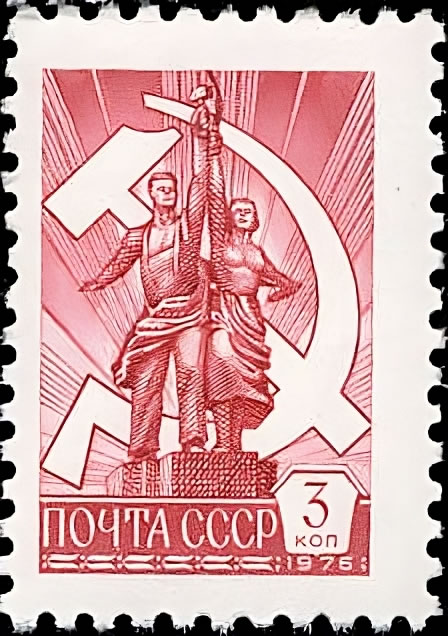
Women’s Right to Vote in Russia
Women’s Day Russia / March 15, (1917)
RU

Women’s Right to Vote in Russia: A Revolutionary Achievement
Women in Russia gained the right to vote on March 15, 1917, following the February Revolution (which occurred in March according to the Gregorian calendar). This historic development came through a decree issued by the Russian Provisional Government, making Russia one of the earlier European nations to grant women’s suffrage.
The Path to Women’s Suffrage in Russia
The struggle for women’s political rights in Russia emerged within the broader context of revolutionary movements challenging the tsarist autocracy. Unlike many Western countries where suffrage movements developed independently, Russian women’s political activism was deeply intertwined with revolutionary politics and calls for comprehensive social transformation.
The late 19th century saw the emergence of women’s organizations advocating for expanded rights. In 1895, the Russian Women’s Mutual Philanthropic Society was founded, initially focusing on charitable activities but gradually expanding to include discussions of women’s rights, including suffrage. By 1905, in the wake of Russia’s first revolution, more explicitly political women’s organizations formed, including the All-Russian Union for Women’s Equality.
Key Women in the Russian Suffrage Movement
Anna Filosofova (1837-1912)
A pioneer of the Russian women’s movement, Filosofova co-founded the Russian Women’s Mutual Philanthropic Society and advocated for women’s education and political rights. Her efforts to build coalitions among women from different social backgrounds helped establish the foundations for later suffrage activism.
Anna Miliukova (1861-1935)
As a leader in the Union for Women’s Equality, Miliukova worked to incorporate women’s suffrage into the broader democratic program. Married to liberal politician Pavel Miliukov, she used her position to advance women’s political rights within opposition circles.
Alexandra Kollontai (1872-1952)
Perhaps the most internationally recognized Russian feminist, Kollontai approached women’s rights from a Marxist perspective. She argued that women’s liberation required both political rights and fundamental social transformation. After the Bolshevik Revolution, she became the world’s first female cabinet minister as People’s Commissar for Social Welfare.
Maria Pokrovskaya (1852-1927)
A physician who established the Women’s Progressive Party in 1905, Pokrovskaya combined advocacy for women’s suffrage with public health initiatives, demonstrating how political rights connected to broader social welfare concerns.
Vera Figner (1852-1942)
Though better known for her revolutionary activities, Figner advocated for women’s rights during her long life, embodying the close connection between women’s emancipation and revolutionary politics in the Russian context.
The Revolutionary Breakthrough
The February Revolution of 1917, which overthrew the Romanov dynasty, created an opening for democratic reforms. The Russian Provisional Government, formed after Tsar Nicholas II’s abdication, moved quickly to implement political liberalization.
On March 15, 1917, the Provisional Government issued a decree announcing elections to the Constituent Assembly based on “direct, equal, universal, and secret suffrage without distinction of gender.” This decree effectively granted women both the right to vote and to stand for office.
Russian women first exercised their voting rights in the elections to the Constituent Assembly in November 1917. However, the political context had changed dramatically by this point. The Bolsheviks seized power in the October Revolution (November by the Gregorian calendar) just days before the elections. Though the elections proceeded, the resulting Constituent Assembly was dissolved by the Bolsheviks in January 1918 after meeting for just one day.
The Soviet government that followed formally codified women’s political equality in its 1918 constitution, declaring that “men and women have equal rights.” However, as the Soviet system evolved toward a one-party state, the practical significance of voting rights diminished for both women and men, as elections no longer offered meaningful political choices.
Russia in Regional Context
Russia’s grant of women’s suffrage in March 1917 positioned it among the earlier European nations to take this step:
Earlier than Russia:
- Finland (then part of the Russian Empire): 1906
- Norway: 1913
Around the same time as Russia:
Later than Russia:
- United Kingdom: 1918 (limited), 1928 (equal)
- Sweden: 1919
- Czechoslovakia: 1920
- Hungary: 1945
- Romania: 1946
- Bulgaria: 1944 (full rights)
- Ukraine (within USSR): 1917/1918
Within Eastern Europe specifically, Russia was among the earliest to grant women’s suffrage, part of a wave of democratization that swept through the region during and immediately after World War I. The revolutionary context of Russia’s transition meant that women’s suffrage arrived abruptly as part of broader democratic reforms, rather than through the gradual, incremental approach seen in some Western European countries.
Factors Behind Russia’s Early Adoption
Several factors contributed to Russia’s relatively early adoption of women’s suffrage:
- Revolutionary Context: Women’s suffrage emerged from a comprehensive political transformation that overturned existing institutions, creating opportunity for radical reforms.
Women’s Participation in - Revolutionary Movements: Russian women played active roles in revolutionary activities, enhancing the legitimacy of their political demands.
- Ideological Influences: Both liberal democratic and socialist ideologies, which influenced the February Revolution, theoretically supported women’s equality, though with different emphases.
- International Context: By 1917, women had already gained voting rights in several countries, creating precedent and models for the newly formed Provisional Government.
Legacy and Limitations
The achievement of women’s suffrage in Russia presents a complex legacy. On one hand, the early grant of political rights to women represented a significant advancement. The Soviet government that followed the revolution implemented numerous policies aimed at women’s emancipation, including liberal divorce laws, legalized abortion (later temporarily reversed), and efforts to socialize childcare.
On the other hand, the evolution of the Soviet system toward authoritarianism limited the practical significance of voting rights for all citizens. Elections became largely ceremonial exercises within a one-party system. The tension between formal political equality and meaningful political participation characterized much of the Soviet experience.
After the dissolution of the Soviet Union in 1991, Russia maintained women’s formal political rights but has struggled with achieving substantive gender equality in political representation. As of recent data, women constitute approximately 16% of deputies in the State Duma, below the global average for national parliaments.
Conclusion
The achievement of women’s suffrage in Russia on March 15, 1917, represented a significant milestone not just for Russian women but in the global history of women’s political rights. Coming relatively early compared to many European nations, this development emerged from Russia’s revolutionary context and reflected the connection between women’s emancipation and broader social transformation.
While the practical implementation of these rights was complicated by subsequent political developments, the 1917 suffrage decree remains an important historical moment that recognized women’s right to full citizenship. Russia’s experience illustrates how women’s political rights often advance during periods of broader political change and how formal rights, while necessary, are not always sufficient to ensure full and equal political participation.

